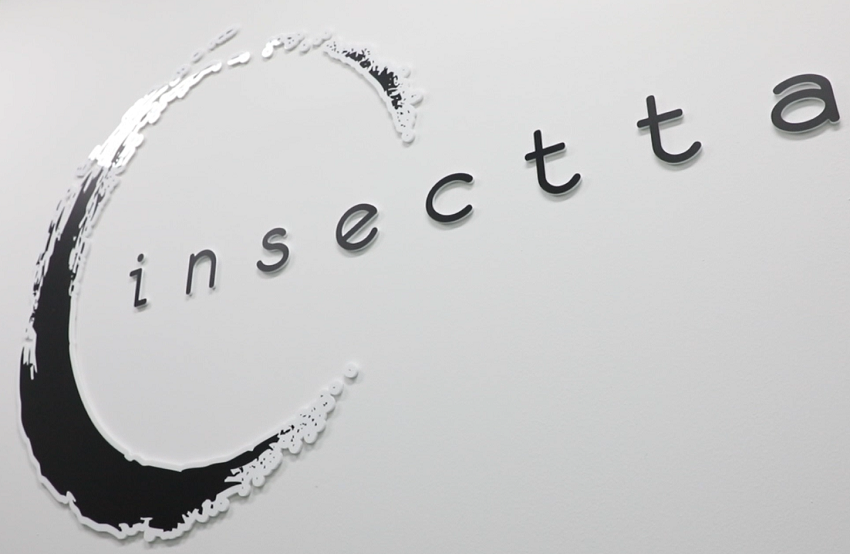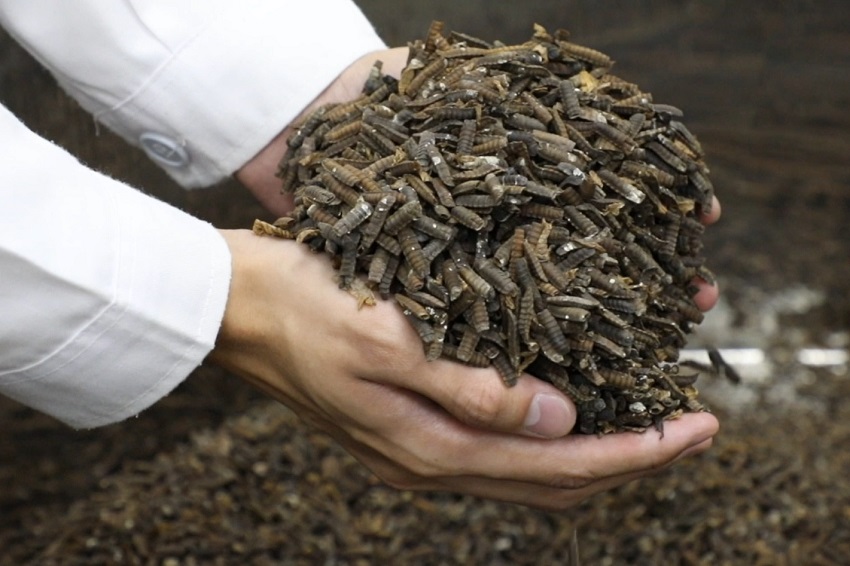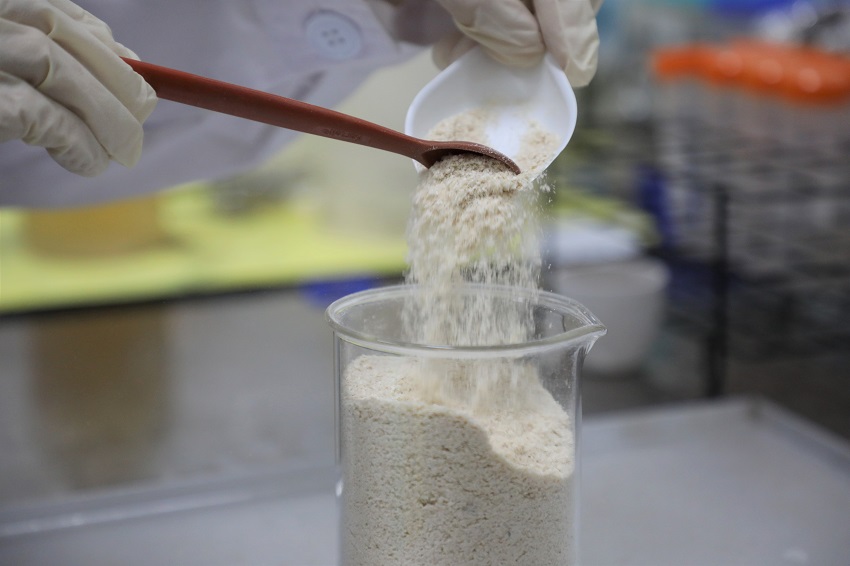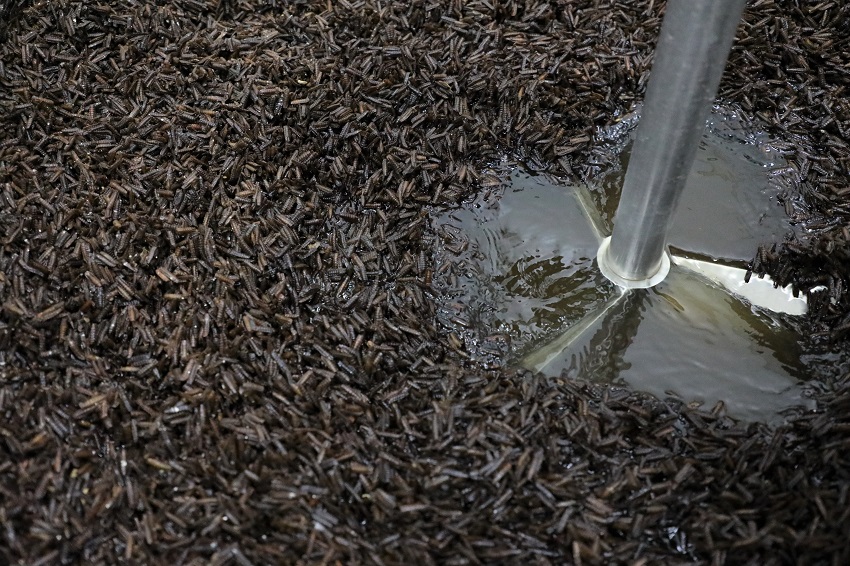
In the heart of Singapore’s vibrant urban landscape, one company is fusing the marvels of nature with the might of technology to enrich the manufacturing sector. Established in 2018 and now operating out of JTC CleanTech Three @ Jurong Innovation District (CT3), Insectta is unlocking the potential of the black soldier fly, transforming it into two valuable biomaterials: chitosan and eumelanin (sometimes shortened to melanin).

Insectta started as Singapore's first insect company before pivoting towards biomaterials.
By melding biotechnology and sustainability, Insectta aims to pioneer a path where insects lead the way in circular economy solutions, offering a glimpse into a more sustainable and resource-efficient future. We speak to Chua Kai-Ning, Insectta Co-founder and Chief Marketing Officer, to learn more about its journey and goals.
Tell us more about Insectta.
At Insectta, we want to enable a future where insects power our healthcare and electronics. We work with the amazing black soldier fly, an insect that is used around the world, to power the circular economy. We extract two very valuable biomaterials, chitosan and eumelanin, for use in industries such as pharmaceuticals, cosmetics and organic electronics.
We started out as Singapore's very first insect company in 2018, farming the black soldier fly before pivoting towards biomaterials in 2020. We realised that there was a big gap that needed to be filled in the black soldier fly industry and that the entire industry was stuck at producing just agriculture outputs like fertiliser or animal feed. It led us to think: what if we could use insects to power higher-value applications? That question led us down the path of developing the chitosan and, later, the eumelanin extraction processes.

Precious biomaterials are extracted from the cocoons of the black soldier fly.
What makes chitosan and eumelanin special?
Chitosan is a naturally occurring biomaterial that is found in the shells of insects and crustaceans. It is used in various industries including cosmetics, personal wellness, healthcare, and agriculture. You'll find it in things such as face creams, hair conditioners, or wound-healing bandages. Our vision is to produce a superior and more sustainable chitosan for these sectors by harnessing the potential of insects. This approach offers significant advantages, as it not only yields a higher quality chitosan, but it’s also more sustainable as well.

Chitosan is a versatile biomaterial used in a wide range of industries, from personal care to pharmaceuticals. Insectta produces a purer and more sustainable form of chitosan.
On the other hand, eumelanin is the pigment that colours our hair, our skin and eyes. But far from being an ordinary pigment, eumelanin has garnered attention from the biomedical and organic electronics industries for its ability to aid in bone and wound healing, conduct electricity, improve the efficiency of fuel cells and more. What we're doing at Insectta is elevating the potential of eumelanin. It was once a very expensive biomaterial that was hard to work with, but our innovative process has enabled us to produce it in an easy-to-use water-soluble form, in unprecedented quantities and at a very cost-competitive price.
Talk us through your extraction process.
If I were to sum up our process into three simple steps, it commences with sourcing the raw material — the cocoon shells of the black soldier fly. Farms typically discard these shells, and we repurpose this by-product. After washing and processing the cocoon shells, we proceed to step two, which involves extracting the chitosan and eumelanin.

The black soldier fly cocoons are washed before they are processed.
Like an oil refinery, our process yields different biomaterials at various stages. We first get chitin, the precursor of chitosan, then we refine it into chitosan. Subsequently, we extract the eumelanin. Finally, we move to step three, our wastewater treatment process.
In this step, we combine wastewater from steps one and two and mix it in a specific ratio, allowing us to recapture by-products such as proteins, probiotics, and minerals. The resulting wastewater can be safely discharged down the drain. This treatment not only yields additional products for sale but also reduces the cost of wastewater treatment.
What led Insectta to establish itself at CT3?
As a startup, collaborations and strategic partnerships are important for us to get off the ground. And a great example of that would be working together with JTC.
Customisation was important to us when we were looking for a place to set up our pilot facility. Because this is such a novel process, we needed a space that suited our needs. It was crucial that we set up our pilot facility right as it was the springboard for us to develop our industrial scale processes by scaling up our lab process by 30x.
To ensure we had a space that was best for our pilot facility, we worked with JTC representatives who showed us the different spaces available at CT3. The unit we eventually landed on boasted a size that’s perfect for us. It is a bare flexi-lab space, which we fitted out according to our needs. Being at CT3 also allowed us opportunities to hold or join networking sessions at the Jurong Innovation District Industry Connect Office, which is in the same premises.

Where does Insectta see itself in the future?
We believe that insects have so much to offer! We want to be a leader in producing insect biomaterials, as well as to drive and increase the economic and environmental impact of the insect industry. We aspire to create a future where everyone embraces the integration of technological innovations with some of nature’s overlooked creatures.
WATCH: Insectta's Chua Kai-Ning shares how insects can be the key to a sustainable future
 A Singapore Government Agency Website
A Singapore Government Agency Website


